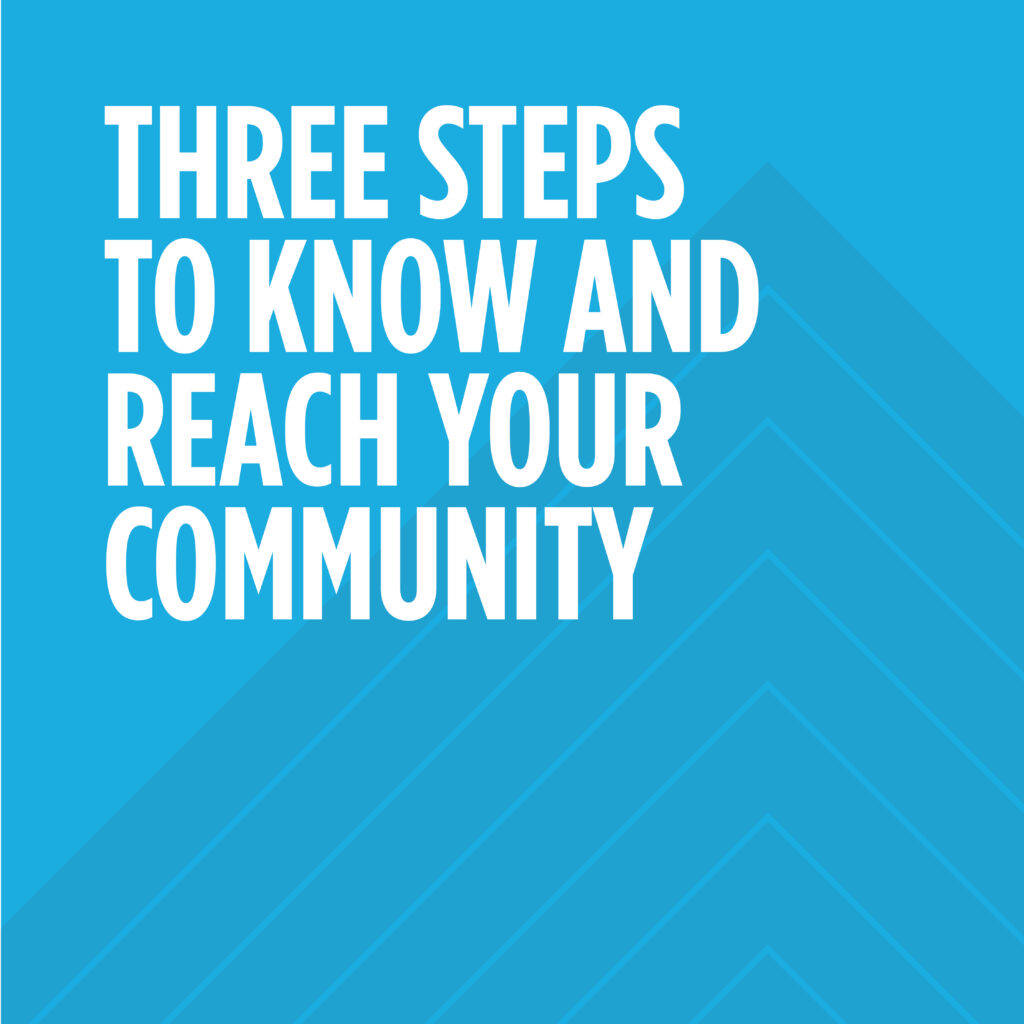
As followers of Christ, we’ve all been given the same mission to make the gospel known. That’s not just a calling for missionaries or pastors. It’s a command for every believer and every church. But to fulfill that mission, we must first understand the people God has placed around us.
Embracing your community means more than knowing where your church building sits on the map. It’s about learning who your neighbors are, what they value, and how you can lovingly and effectively point them to Jesus.
Just like a missionary learns the language and customs of a new culture, every local church must pursue an appropriate level of cultural understanding of its own community. The more you learn, the more you’ll come to love and appreciate the people around you and lead others in your congregation to do the same.
So how do you practically embrace your community and the command to make Christ known there? Here are three key actions that can help every church leader begin that journey.
- Gather Information
The first step is to gather information about your community. This is the foundation for everything that follows. You can’t reach people well if you don’t first understand who they are.
Start by looking within a three-, five-, or ten-mile radius of your church. Gather demographic data such as overall population, racial and ethnic makeup, age distribution, and household types. Ask: Which groups are the largest? Do these groups interact, or do they live in silos?
Go deeper into the data. What languages are spoken in your area? What’s the education level? How do employment and income levels vary? What are the dominant beliefs, values, and attitudes? Are people traditional or progressive, religious or secular, social or reserved? These insights can help you understand not only the physical landscape but also the emotional and cultural ones.
Remember, this list isn’t exhaustive. You can pursue any other information that helps you better understand the people in your mission field.
Once you’ve studied your community, take the same approach with your church. Gather data about your congregation such as median age, education level, racial or ethnic makeup, and other similar metrics. This step allows you to compare who your church is with who your community is.
Gathering this information is more than an exercise in research. It’s an act of stewardship. You’re saying, “God, we want to know the people You’ve called us to reach.”
- Analyze the Data
After you’ve collected the information, analyze it carefully. This is where you begin to draw connections, notice patterns, and uncover realities that may have gone unseen.
Take time to make sense of what the numbers and descriptions reveal. Create a report that summarizes your findings. When I pastored a local church, our leadership team did exactly this. We collected data from both our church and community and then wrote up an analysis report that helped us understand the spiritual and cultural dynamics at play.
This report doesn’t have to be complicated. It just needs to reflect your honest assessment. What stands out? Where are there differences between your church and community? Where are there similarities?
Once you’ve analyzed the data from both your community and congregation, you’re in a position to see where God might be inviting your church to grow or change.
Sometimes this process will affirm what you’re already doing. Other times it will reveal blind spots—areas where your church’s culture or makeup doesn’t reflect the people God has placed around you.
Analysis is the bridge between information and action. It helps you turn data into direction.
- IdentifyGospel Insights
The third step is to identify gospel insights by comparing your church and community data. This is where you begin to uncover gospel barriers, gospel bridges, and gospel actions.
When I served as a pastor and began gathering data about my church and the surrounding community, we realized one of the barriers to gospel engagement in our community was racial division. People lived in cultural silos, and our church didn’t reflect the diversity of our surroundings. Recognizing that helped us identify a gospel action: we needed to equip our members to engage in cross-cultural evangelism.
Another barrier was age demographics. Our church’s average age was 72, while the community’s was 36. That revealed a generational gap. But within that gap, we found a gospel bridge. Our older members had time, wisdom, and resources, while many younger families in the community lacked those things. By equipping our older members to invest in and disciple younger adults, we created meaningful cross-generational relationships that opened doors for the gospel.
That’s what happens when you faithfully identify gospel insights. You’ll begin to see where barriers exist, where bridges can be built, and where specific gospel actions need to be taken. These insights move evangelism from being reactive to intentional. They help your church see where God is already at work and where He may be calling you to join Him.
Embracing the Mission God Has Given You
When you complete these three steps: gathering information, analyzing data, and identifying gospel insights, you begin to truly embrace your community. You’re not simply looking at numbers and trends; you’re seeing people made in the image of God, people who need the hope of Jesus.
Creating a culture of evangelism begins with that kind of understanding. It’s not about strategies first; it’s about compassion. When your church understands the community, you can engage it more faithfully, love it more deeply, and reach it more effectively.
So, start today. Learn about the people who live around you. See them as God sees them. Then lead your church to take intentional steps to make the gospel known to every person in your community. Because when you embrace your community, you embrace the heart of God and the command He’s given us to make His name known to the ends of the earth.
_________________________________________________________________________________
This article was adapted from sessions of the Creating a Culture of Evangelism online training course. To learn more or take the course, click here. Also available in Spanish.
Published November 6, 2025
